
PROSTHODONTICS
Where science meets art for your smile.
Artius Dental provides specialised prosthodontic treatments aimed at restoring and replacing teeth to improve function, comfort, and appearance.
With advanced techniques and materials, Artius Dental can help restore your smile and boost your confidence.
We provide the following treatments:
Bridges
Prevent Further Damage and Preserve Your Smile
What is a bridge?
A dental bridge saves teeth by filling in gaps caused by missing teeth. It helps maintain dental health by preventing remaining teeth from shifting and restores the ability to chew and speak. With a dental bridge, your smile is complete and ready to take on the world!
What are dental bridges made of?
A bridge fills the gap between teeth with crowns on either side (abutment teeth) and a false tooth/teeth (pontics) in between. Pontics can be made of different materials, such as gold or porcelain, and are held in place by natural teeth or implants.
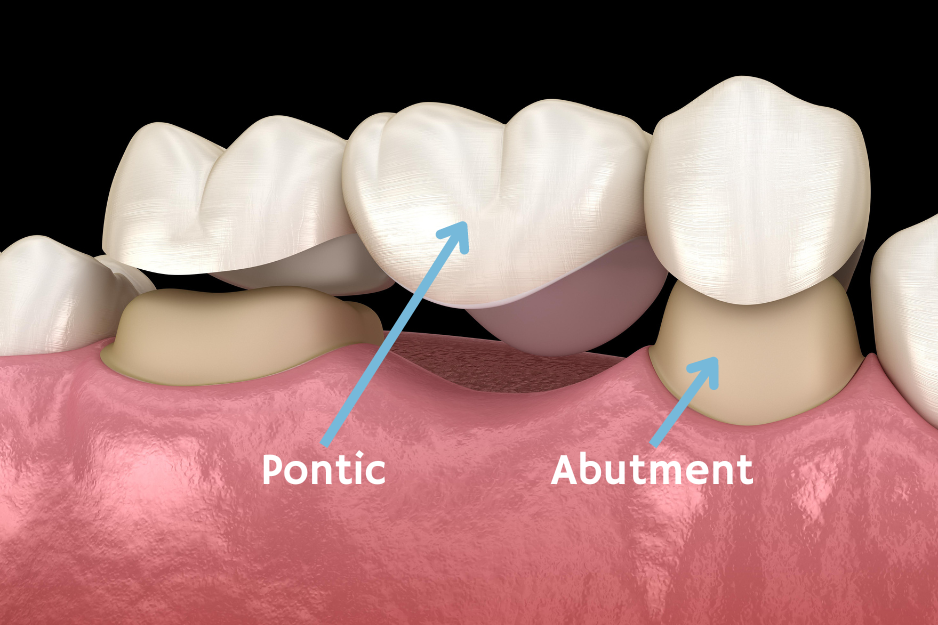

What is a bridge?

A dental bridge saves teeth by filling in gaps caused by missing teeth. It helps maintain dental health by preventing remaining teeth from shifting and restores the ability to chew and speak. With a dental bridge, your smile is complete and ready to take on the world!
What are dental bridges made of?
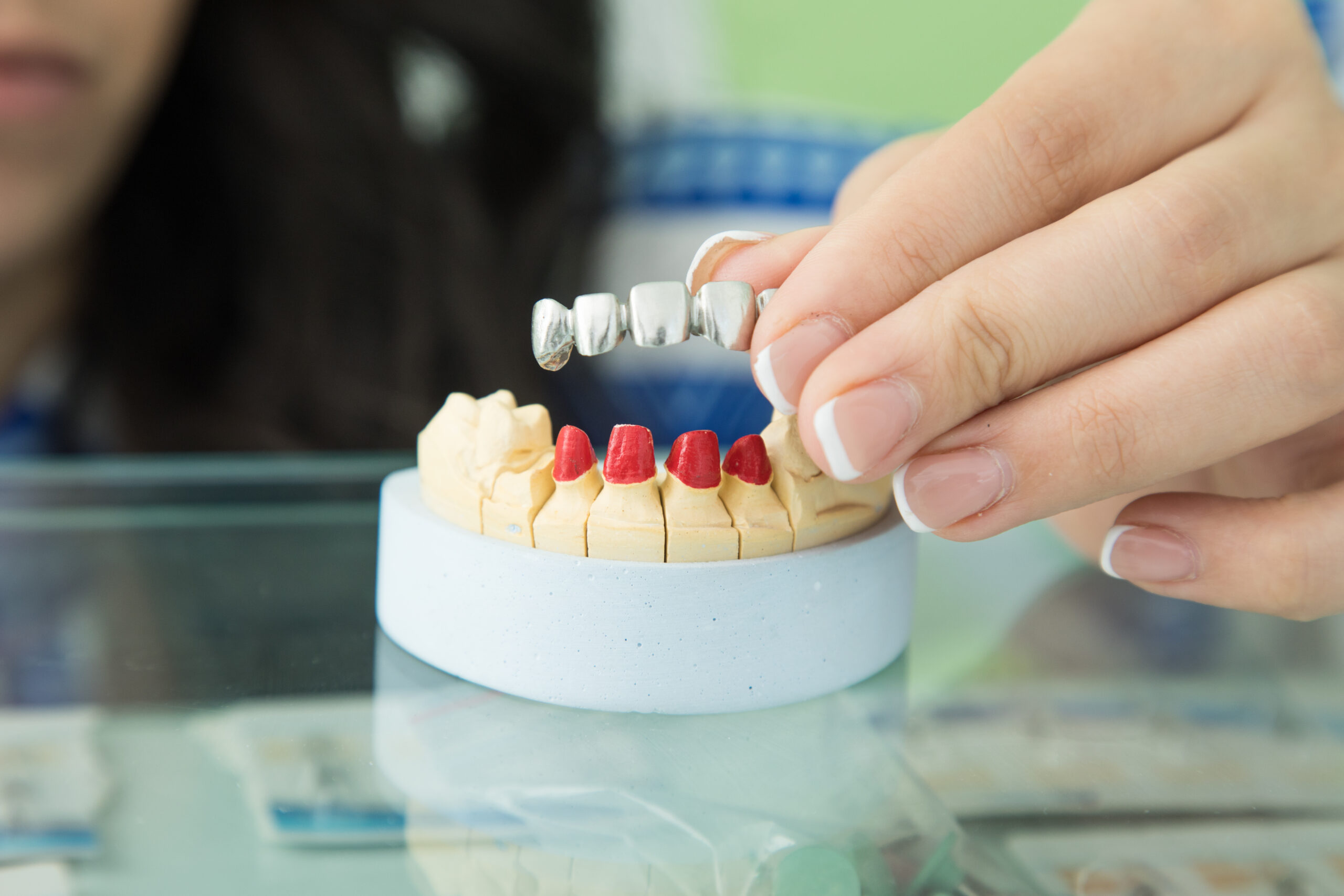
A bridge fills the gap between teeth with crowns on either side (abutment teeth) and a false tooth/teeth (pontics) in between. Pontics can be made of different materials, such as gold or porcelain, and are held in place by natural teeth or implants.

The Process of Getting a Bridge
Our skilled dental team at Artius Dental is experienced in providing high-quality dental bridges to help you achieve a healthy and beautiful smile.
1. Tooth Preparation
The first step is to prepare the teeth on either side of the gap by removing a portion of enamel to allow room for a crown to be placed over them.
2. Impression Taking
Impressions of the teeth are then taken to create a model from which the bridge, pontic, and crowns will be made by our in-house dental laboratory.
3. Temporary Bridge Creation
A temporary bridge is created by our lab for the patient to wear to protect the exposed teeth and gums while waiting for the permanent bridge.
4. Permanent Bridge Fixing
During the second visit, the temporary bridge is removed, and the permanent porcelain or metal bridge is fixed or cemented to the prepared teeth. This type of bridge is permanent and cannot be taken out of the mouth without a dentist's help.
5. Follow-Up Visits
One or more follow-up visits are necessary to ensure the bridge fits, is adjusted, and cemented in place.
6. Implant Placement (Optional)
In some cases, dental implants may be used to support a bridge when several teeth are missing. Implants are surgically placed posts that fuse to the jawbone to act as a base for the bridge. A key benefit of implants is that they don't need support from the surrounding teeth.

The Process of Getting a Bridge
Our skilled dental team at Artius Dental is experienced in providing high-quality dental bridges to help you achieve a healthy and beautiful smile.
1. Tooth Preparation
The first step is to prepare the teeth on either side of the gap by removing a portion of enamel to allow room for a crown to be placed over them.
2. Impression Taking
Impressions of the teeth are then taken to create a model from which the bridge, pontic, and crowns will be made by the in-house dental laboratory.
3. Temporary Bridge Creation
A temporary bridge is created by the lab for the patient to wear to protect the exposed teeth and gums while waiting for the permanent bridge.
4. Permanent Bridge Fixing
During the second visit, the temporary bridge is removed, and the permanent porcelain or metal bridge is fixed or cemented to the prepared teeth. This type of bridge is permanent and cannot be taken out of the mouth without a dentist's help.
5. Follow-Up Visits
One or more follow-up visits are necessary to ensure the bridge fits, is adjusted, and cemented in place.
6. Implant Placement (Optional)
In some cases, dental implants may be used to support a bridge when several teeth are missing. Implants are surgically placed posts that fuse to the jawbone to act as a base for the bridge. A key benefit of implants is that they don't need support from the surrounding teeth.
Dental Crowns
Transform your smile with the power of dental crowns
What is a dental crown?
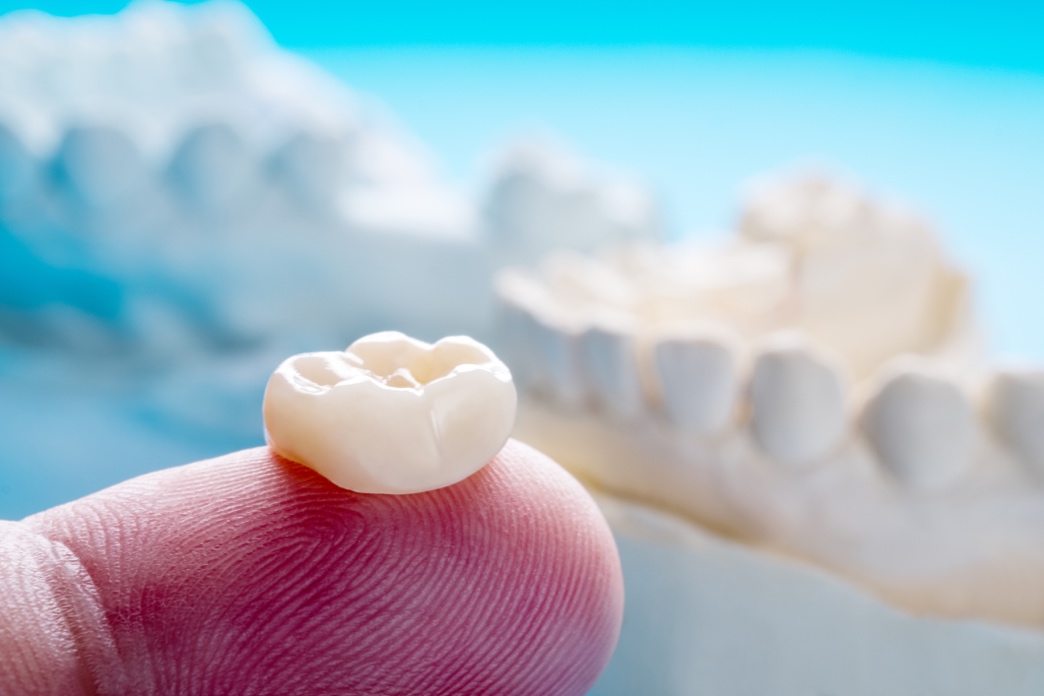
Dental crowns act as protective hats for your teeth, providing support and aesthetic improvements. They're great for damaged or decayed teeth and come in various materials and colors for a personalised look. Treat your tooth to a crown today!
uses of dental crowns
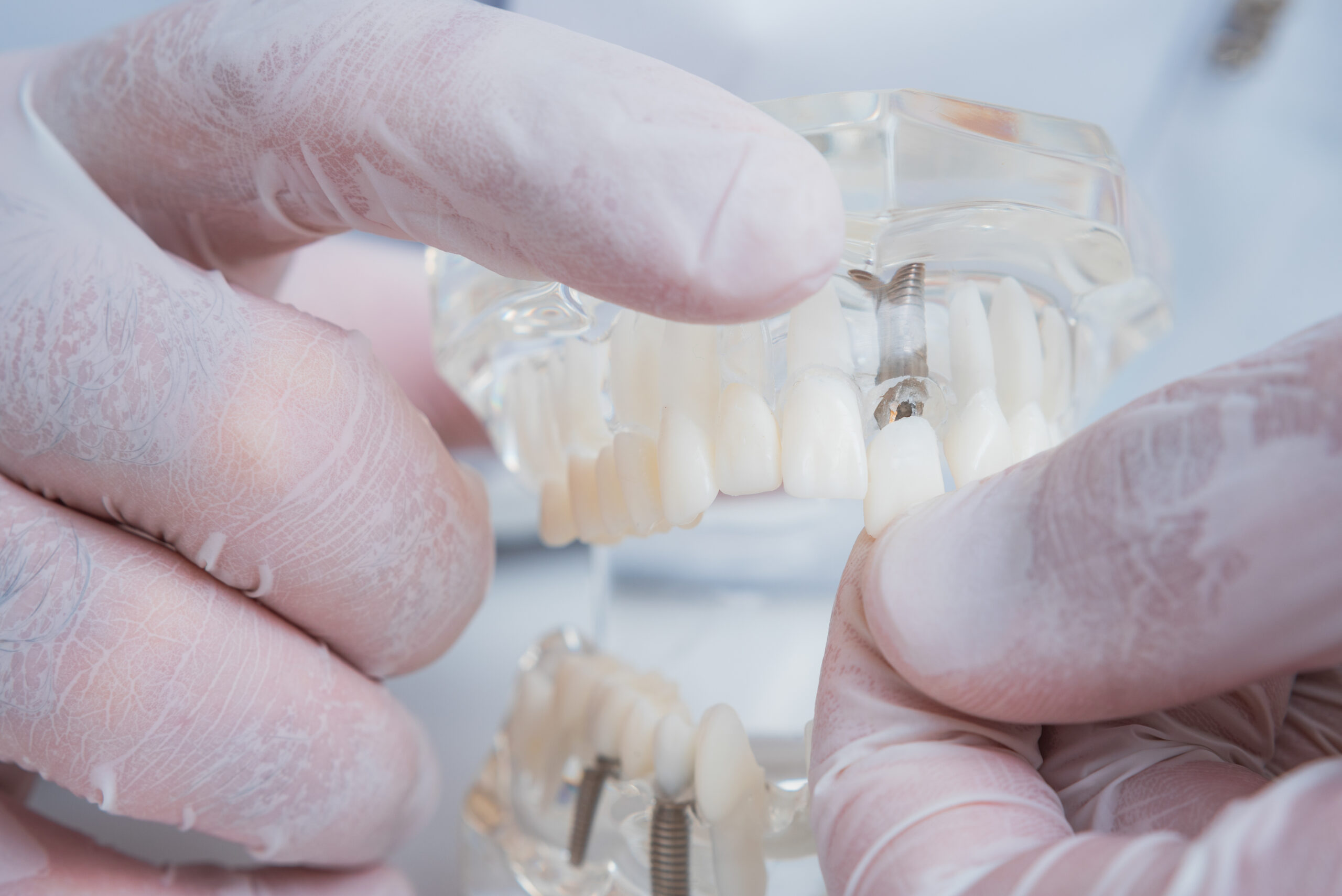
What is a dental crown?
Dental crowns act as protective hats for your teeth, providing support and aesthetic improvements. They're great for damaged or decayed teeth and come in various materials and colors for a personalised look. Treat your tooth to a crown today!
When Do I need A dental crown



The Process of Getting a Dental Crown
Numbing the Tooth and Gum Tissue
Our dentist will apply anaesthetic to numb the tooth and surrounding gum tissue.
Preparing the Tooth
The outer surface of the tooth from the top and sides will be removed using a dental drill and an abrasive bur to create adequate room for the crown to be placed.
Taking a Mould of the Tooth
A mould (impression) of the tooth will be taken either manually or digitally, which will be sent to a laboratory to process a crown that fits your tooth.
Fitting a Temporary Crown
In the interim, our dentist will fit a temporary crown to keep the tooth covered temporarily.
Placing the Permanent Crown
You will have to return to the dentist so that the permanent crown can be placed and fastened securely with cement.
Frequently Asked Questions
How long do dental crowns last?
Dental crowns can last anywhere from 5 to 15 years or even longer with proper care and maintenance.
Are dental crowns painful to get?
No, the process of getting a dental crown is generally not painful as the area will be numbed with local anesthesia.
Are dental crowns noticeable?
Dental crowns are designed to look and feel like natural teeth, so they are not usually noticeable.
How do I take care of my dental crown?
You should take care of your dental crown like you would your natural teeth by brushing twice a day, flossing daily, and visiting the dentist regularly for check-ups and cleanings.
Inlays
Don't let cavities ruin your smile, Inlays are here to save the day!
What is a Dental Inlay?
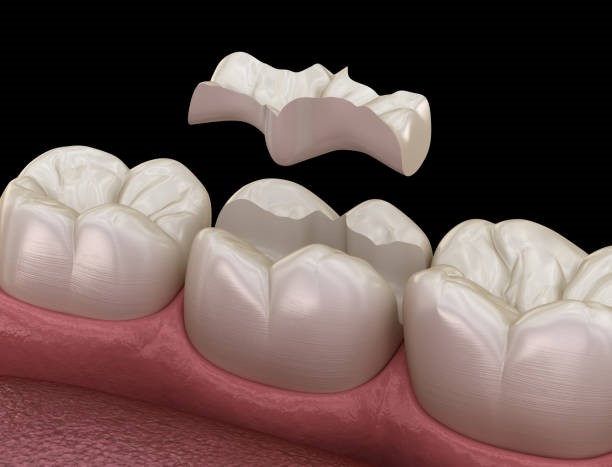
Inlays are like little puzzle pieces for your teeth. When your tooth has a cavity or a piece missing, the dentist can fill in the space with a custom-made inlay that fits perfectly. It's like giving your tooth a tiny jigsaw puzzle piece to complete it!
What are inlays made of?

Inlays are manufactured from porcelain or composite resin material matching the color of the tooth, and provide almost invisible dental restoration while repairing the chewing surface.
Dental inlays are generally more durable than regular fillings made from composite or amalgam, and gold inlays are the most durable and the most expensive of the materials available.
What is a Dental Inlay?
Inlays are like little puzzle pieces for your teeth. When your tooth has a cavity or a piece missing, the dentist can fill in the space with a custom-made inlay that fits perfectly. It's like giving your tooth a tiny jigsaw puzzle piece to complete it!
What are inlays made of?
Inlays are manufactured from porcelain or composite resin material matching the color of the tooth, and provide almost invisible dental restoration while repairing the chewing surface.
Dental inlays are generally more durable than regular fillings made from composite or amalgam, and gold inlays are the most durable and the most expensive of the materials available.



The Process of Getting a Dental Inlay
Numbing the tooth
The dentist will apply anaesthetic to numb the tooth before drilling the tooth to remove and clean out the decay in the tooth.
Removing the decay
The dentist will drill the tooth to remove and clean out the decay in the tooth.
Taking an impression
The dentist will take an impression of the tooth and send it to the laboratory where the inlay is made.
In-house dental laboratory
Single visit restoration is possible with the availability of our in-house dental laboratory.
Bonding the inlay
The inlay is then bonded to the tooth in a single appointment.
Frequently Asked Questions
Is getting a dental inlay painful?
No, getting a dental inlay should not be painful. Before the procedure, the dentist will numb the tooth and surrounding area with a local anaesthetic. After the procedure, the patient may experience some sensitivity or discomfort, but this can usually be managed with over-the-counter pain medications.
How long do dental inlays last?
Dental inlays can last for many years with proper care and maintenance. The lifespan of a dental inlay depends on factors such as the material used, the location of the tooth, and the patient's oral hygiene habits. On average, a dental inlay can last anywhere from 5 to 20 years.
Can dental inlays be used for front teeth?
Yes, dental inlays can be used for front teeth. They are often made of tooth-colored materials like porcelain or composite resin in order to blend in with the natural color of the teeth.
Are dental inlays better than fillings?
Dental inlays offer several advantages over traditional fillings, including their durability, ability to match the color of natural teeth, and the fact that they can strengthen the tooth structure.
Onlays
Say goodbye to damaged teeth with dental onlays
What Is A Dental Onlay?

An onlay is a dental restoration that covers one or more cusps or the chewing surface of a damaged or decayed tooth. Custom-made in a lab, it's like a superhero cape, protecting and strengthening teeth against decay.
What are onlays made of?
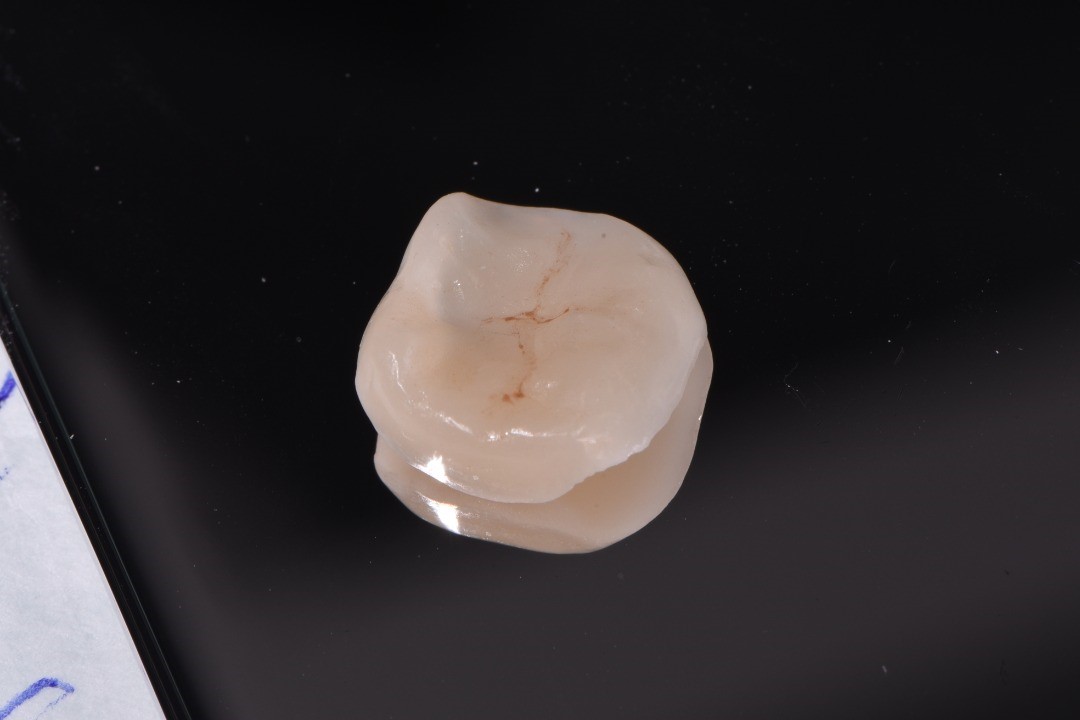
What Is A Dental Onlay?
An onlay is a dental restoration that covers one or more cusps or the chewing surface of a damaged or decayed tooth. Custom-made in a lab, it's like a superhero cape, protecting and strengthening teeth against decay.
What are onlays made of?


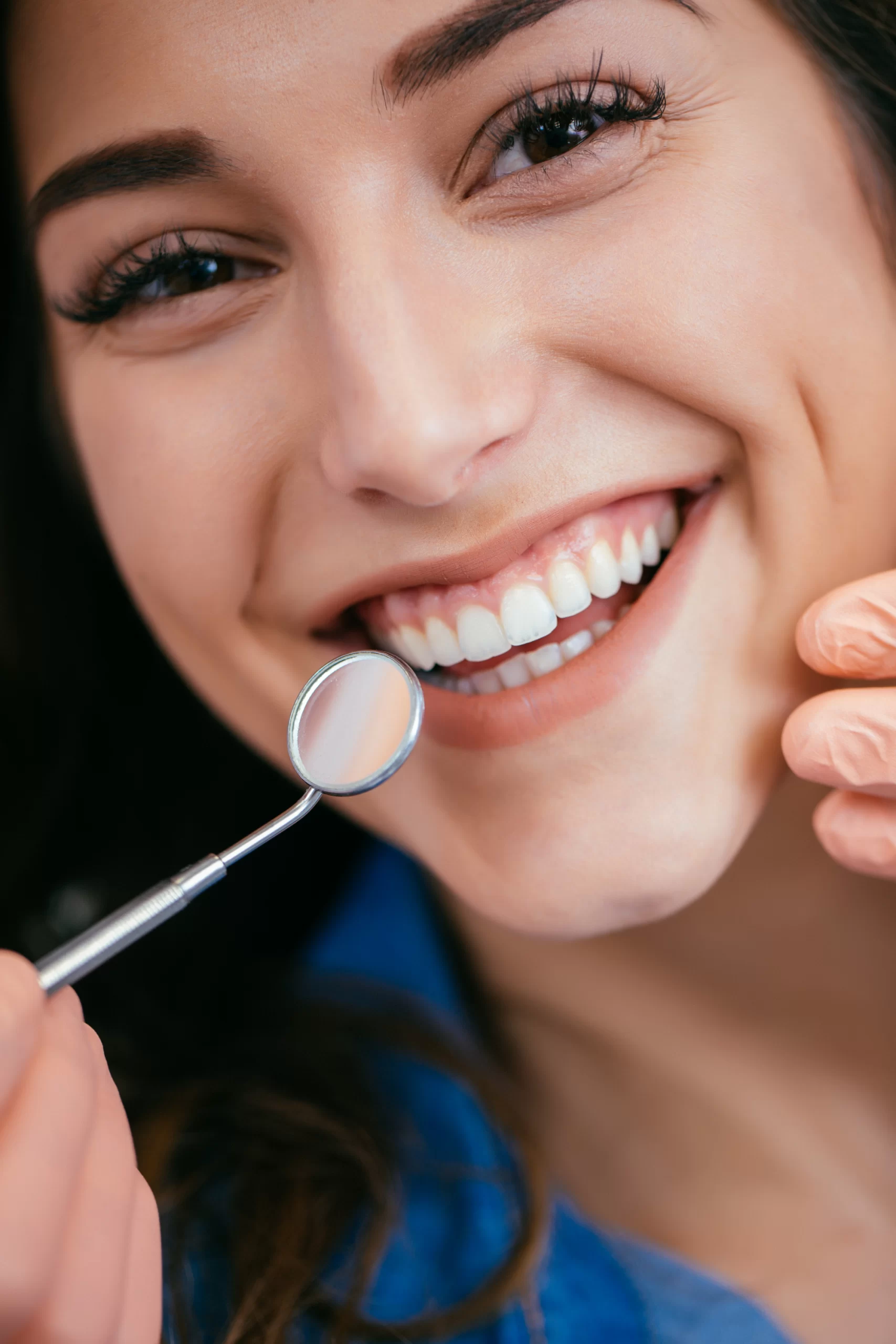
The Process of Getting a Dental Onlay
Tooth Preparation
Our dentist will clean out the cavity down to healthy tooth structure to prepare the tooth for the onlay. This may take longer if the cavity is large.
Dental Impression
Our dentist will take a dental impression of the prepared tooth.
Temporary Onlay Placement
Our in-house dental laboratory will make a temporary onlay to be fitted onto the tooth as protection while you wait for the permanent onlay to be made by our lab.
Permanent Onlay Placement
During your second visit, our dentist will remove the temporary onlay and place the new permanent onlay onto the tooth.
Frequently Asked Questions
Can I eat normally after getting a dental onlay?
Yes, after the onlay is placed and cemented, you can resume your normal diet and eat whatever you want.
Do dental onlays require special care or maintenance?
No, just like your natural teeth, dental onlays require regular brushing, flossing, and dental check-ups to keep them clean and healthy.
Can a dental onlay be placed over a tooth with a filling?
Yes, a dental onlay can be placed over a tooth with a filling, as long as the tooth is healthy enough to support the onlay.
Can a dental onlay be used to fix a broken tooth?
Yes, dental onlays can be used to repair a broken tooth, as long as the tooth is not severely damaged and the onlay can be securely bonded to the tooth.
Suite #01-14, Level 1, Menara See Hoy Chan, 374, Jalan Tun Razak, 50400 Kuala Lumpur
+60 17 – 213 6680

© 2024 Artius Dental Specialist - All Rights Reserved
